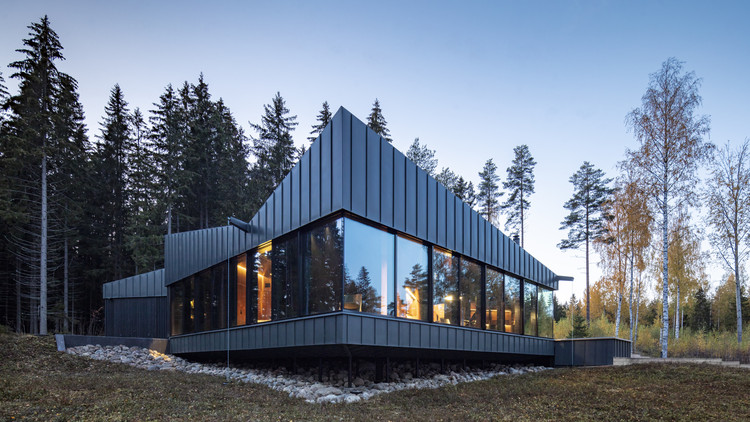
Minimalism has shaped architecture for over a century. Embracing new materials and rejecting ornament, the modernist movement grounded minimalist architecture through rational use and function. Throughout the 20th century, architects returned to minimalism as they worked with glass, steel and reinforced concrete. Over time, minimalist and modernist designs became more closely tied to cost, construction and aesthetic.

Minimalism began as an art movement after World War II, and later became a prominent design aesthetic in the 1960s and 1970s. Minimalist architecture became popular in the late 1980s in London and New York, where projects often featured simple details, stark white backdrops, and sparse furnishings. In contemporary architecture, minimalism combines clean lines, a refined material palette, and architectural profiles that are usually tied to iconic geometry. There are many influences, including the De Stijl and Bauhaus movements, and traditional Japanese architecture. The term minimalism has also been used to describe when a subject is reduced to its necessary elements.

Taking a closer look at residential design, the following projects contrast simple, minimalist approaches in more rural settings. As modernist projects, they feature straightforward forms with attention to materials and detailing. Both freestanding structures and multiple buildings together, they show how architects are organizing homes and retreats around diverse programs, landscapes and views.
Small but Fine Cabin by Studio Politaire

Located in the remote landscapes of Scandinavia, this cabin situated in a forest next to a lake. Designed by Berlin design duo Studio Politaire (Jonas Becker / Timm Bergmann), it was designed as a miniamilst retreat within dense vegetation. With a budget of $14,000, the team aimed to create a simple, minimalist effect where the house is staggered with different views from each window. The four slightly offset rooms are surrounded by a unique natural landscape.
Smith House by MacKay-Lyons Sweetapple Architects

Smith House is a vacation home located on the Atlantic coast of Nova Scotia, adjacent to the architect’s farm (Shobac). The home consists of three pavilions on a two-acre site spanning from a salt pond on the east to a bold oceanfront on the west. It was made as a proto-urban project, forming a village, together with other houses designed by the architect, on the old fishing village site. Multiple courtyards are framed between the structures that center on daily rituals of dwelling.
3 Square House by Studio Puisto

3 Square House is approached from the south through a dense spruce forest, as the lake landscape slowly opens on the east side. The spruce forest forms a natural and characteristic back wall for the construction site. It acts as a strong visual barrier along the western boundary of the plot. The rhythmic line of birches by the shore is an essential feature for the landscape opening from the interior of the house and providing privacy when viewing the building from the lake.
Ice House by Minarc

Minarc set out to design the Ice House as a serene family sanctuary that harmoniously connects inhabitants with the surrounding natural environment while combining the best sustainable, eco- friendly materials and energy efficient technologies. It includes two bedrooms and one bathroom, plus a loft. The simple design focuses on functionality to create a healthy living environment for the family.
MIMA Light by MIMA Architects

MIMA Light is an exploration in modular construction, combining lightness with an iconic and minimal image. The home was designed to seemingly levitate above the ground due to the lining of the base with mirrors. Outside, the object can be appreciated from multiple angles. Inside, the comfort of a uniform coating in pine combines with minimalist details to create an inviting space to unwind. The quality of its components and materials create a chromatic composition with a small footprint.
House Gable by mia2/Architektur

House Gable is located on a slope site on the edge of a small settlement with views of the Pyhrn-Priel, an alpine region in Upper Austria. The private builders wanted to create a house that matches the surroundings and brings the outdoors inside. The young family requested a calm, clear architecture made of wood, concrete and glass. The solid timber house’s simplicity comes from the clear structure and proportion of base, ground floor and roof.
Editor's Note: This article was originally published on January 28, 2020



















